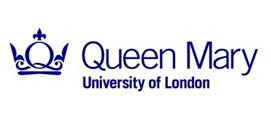Space: post-16
This list is designed to link to suitable resources to use space as a context for teaching STEM subjects for students above the age of 16.
Some of these resources require FREE registration with the STEM Learning website. Registration also gives you access to thousands of other quality assured STEM resources.
- ALL
- Activity sheet
- Other
Activity sheet
Lift Off!
This resource, from the European Space Agency, contains exercises in physics and chemistry based on real space data, designed for secondary schools. The exercises and data were developed and checked by ESA space scientists and engineers.
There are a total of 25 exercises and each exercise page has an associated page of solutions. The following curriculum areas are covered by the exercises: thermodynamics, mechanics, energy, electricity, waves, geometry, quantum physics, electromagnetic radiation, density, chemical reactions, gravitation, ideal gases, power and momentum.
Episode 403: Orbital Motion
Through discussion and worked examples, this resource enables students to combine concepts of circular motion with Newton’s Law of Universal Gravitation to understand the motion of satellites. It includes an explanation of Kepler’s third law.
The activities look at:
• Newton's cannonball analogy
• Kepler's laws of planetary motion
• geostationary orbits
• orbital motion
Build Your Own Universe
Different colour Lego bricks are assigned to different quarks and leptons. The quarks can be put together to make hadrons, such as protons and neutrons. The blocks can also be used to show particle interactions and decays.
The resource displays timings from the beginning of the universe, and shows how Lego bricks can be used to describe the synthesis of lighter elements, such as hydrogen and helium, up to carbon.
Plotting the Rotation Curve of M31
In this activity, from the Royal Observatory Greenwich, students use real data, taken from a scientific paper, to plot the rotational curve of M31 (Andromeda), our neighbouring spiral galaxy.
They will look at Kepler’s third law to predict the motion of stars around the centre of M31. They will then measure the wavelengths of hydrogen emission spectra taken at a range of radii. The Doppler equation will be used to determine whether these spectra come from the approaching or receding limb of the galaxy and the velocity of rotation at that point. A velocity vs radius graph is plotted and compared with their predicted result.
Other
Teaching Advanced Physics: Astronomy
From the Institute of Physics.
The topics covered are:
• Astronomy
• Astrophysics
• Cosmology
• Observations and information from spectra
• Red shift and the Doppler effect
• The expanding universe and Hubble's law





